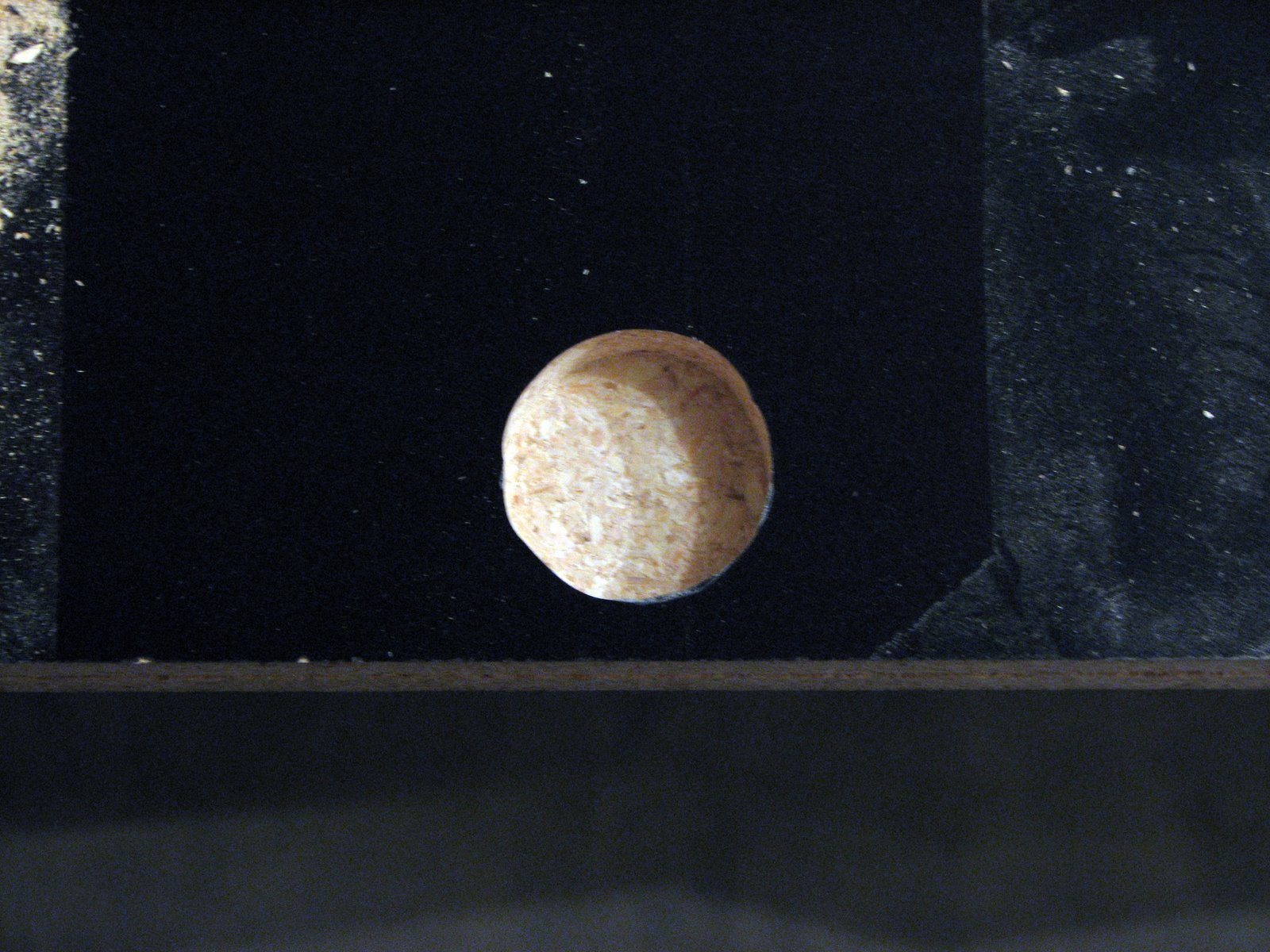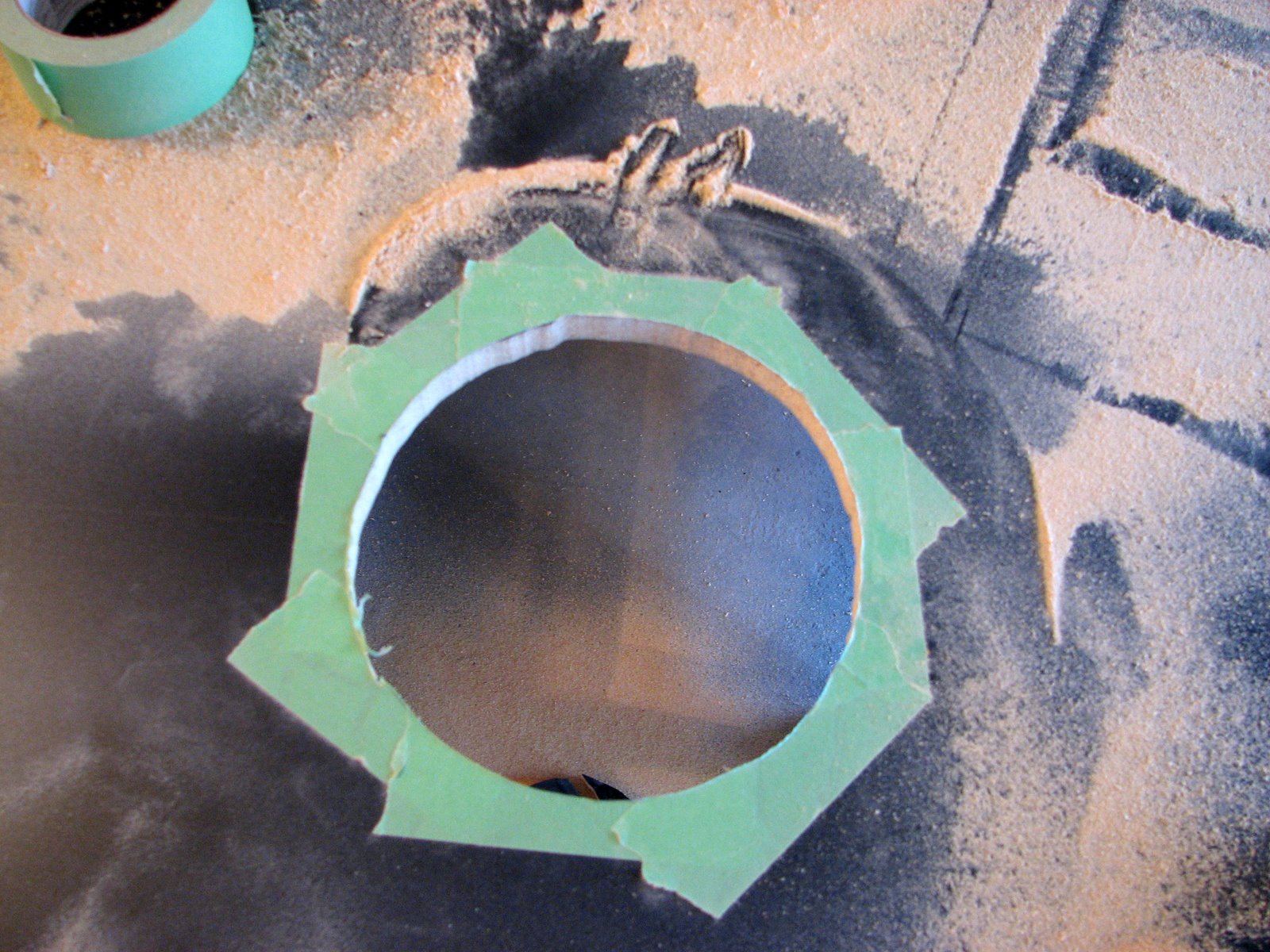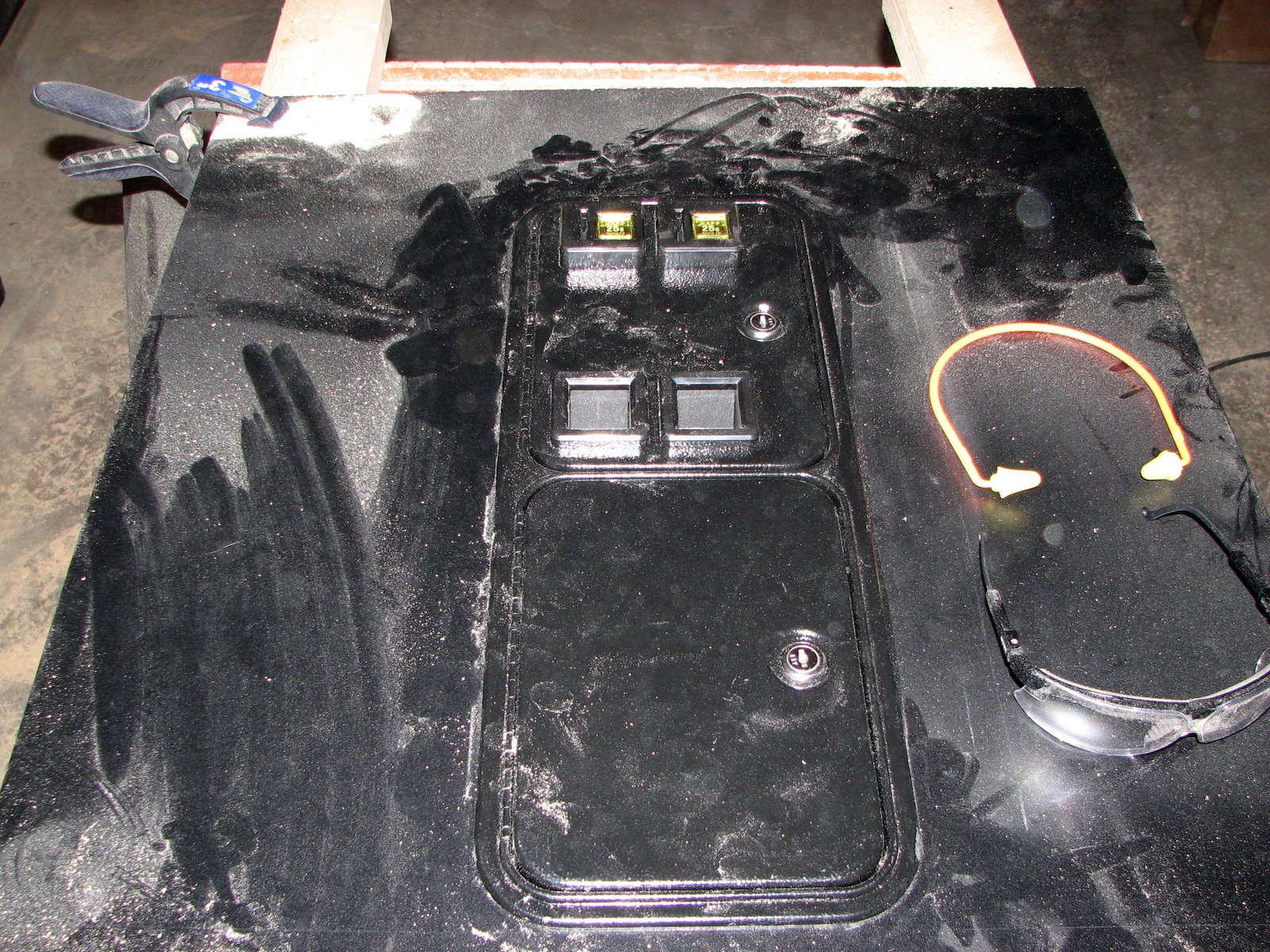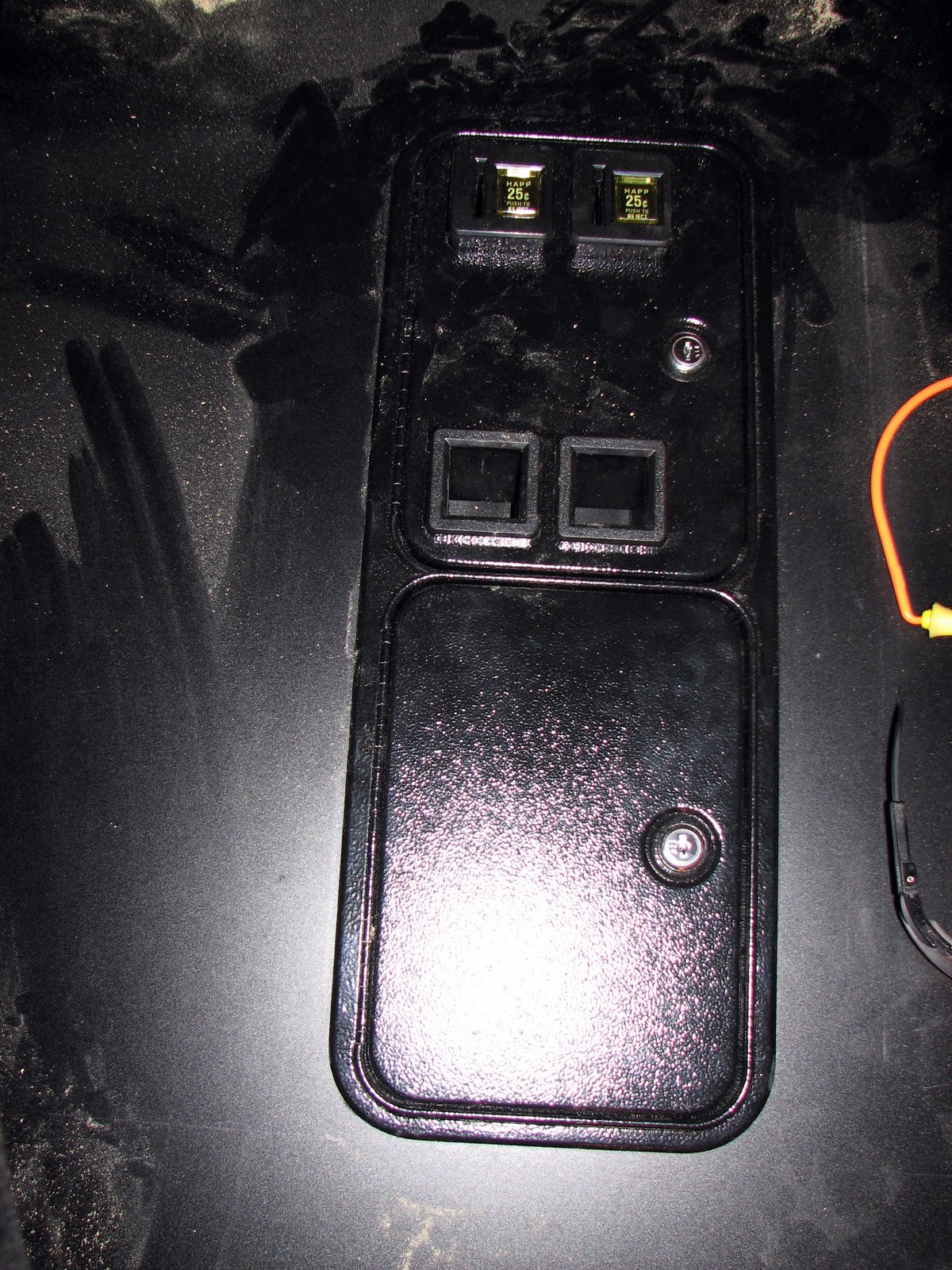Well I've managed to get quite a bit done since my last update. I mounted the speaker shelving, the front door, wired the speakers, wired the back and top fans, and wired the marquee light.
Tonight I'll likely be mounting the marquee light and the coin door, and spending the next few days wiring the coin door and control panel.
Once I get the monitor mounted I can start working through any play bugs, and polish up the software side of things. At that point I can also order up the smoked glass for the cabinet. Those are all minor details, however.
This weekend was very productive. J and I managed to get the control panel fabrication completed. On Saturday we spent the first part of the day looking at my layout, and then laying it out again to make it as consistent and clean as possible.
Once grid lines had been set out, finding the spots I needed to drill for the joystick holes and buttons was quite quick. We had a bit of a dilemma when it came to top mounting the joysticks, but in the end we solved it by using carriage bolts, and I'll simply remove the cherry switches from the bottom of the joystick prior to mounting. Otherwise we would have had to make the hole quite a bit larger to accommodate the switches sticking out. Doing so would have weakened our mounting points.
Sunday was largely spent finishing and routing. Several hours of routing the trackballs and joysticks left both of us covered in dust and exhausted. We had a small incident while routing the T-molding groove, but nothing that some silicon won't take care of.

Although it's a bit faint, you can see the angled lines we drew to lay out the joystick, button and trackball mounting points.

Each of the intersections of the grid lines represent a point I need to drill for buttons. 1.5" spacing between the buttons and 3.5" from the center of the joystick hole to the center of the first button.
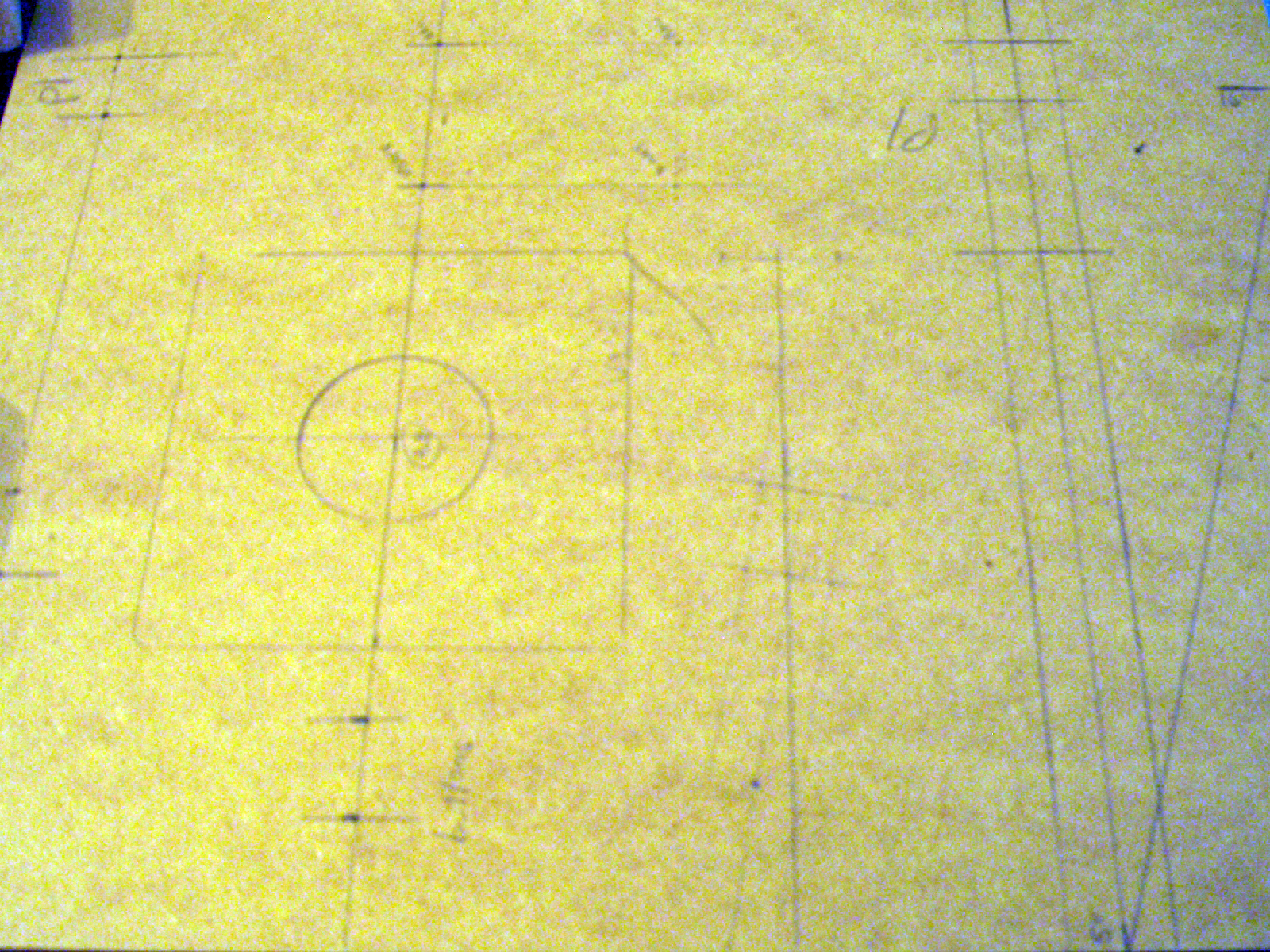 More pictures of the grid lines we used, it probably looks like a complex series of lines to anyone who wasn't involved in drawing it.
More pictures of the grid lines we used, it probably looks like a complex series of lines to anyone who wasn't involved in drawing it.

More examples of our layout.

The template was taped down to the melamine, which allowed me to drill every single joystick and button hole precisely. As you can see, there's not even 1/16" error on the holes.
 A close up of player 1. The thumb button is offset 1 3/4". Originally I started with 1 1/2" like the rest of the buttons, but it left the thumb button too close to button 4. I played around with a few measurements but 1 3/4" ultimately seemed correct.
A close up of player 1. The thumb button is offset 1 3/4". Originally I started with 1 1/2" like the rest of the buttons, but it left the thumb button too close to button 4. I played around with a few measurements but 1 3/4" ultimately seemed correct.
 This is a close up of player 3. Player 3 and Player 4 are a 4 button configuration as that is the most number of buttons required.
This is a close up of player 3. Player 3 and Player 4 are a 4 button configuration as that is the most number of buttons required.
 This is a picture of me drilling what seemed like my millionth hole on the control panel. My Dewalt drill has a bubble on the back to ensure that my hole is going straight down. 1 1/8" spade bit was used for all the joystick and button holes.
This is a picture of me drilling what seemed like my millionth hole on the control panel. My Dewalt drill has a bubble on the back to ensure that my hole is going straight down. 1 1/8" spade bit was used for all the joystick and button holes.
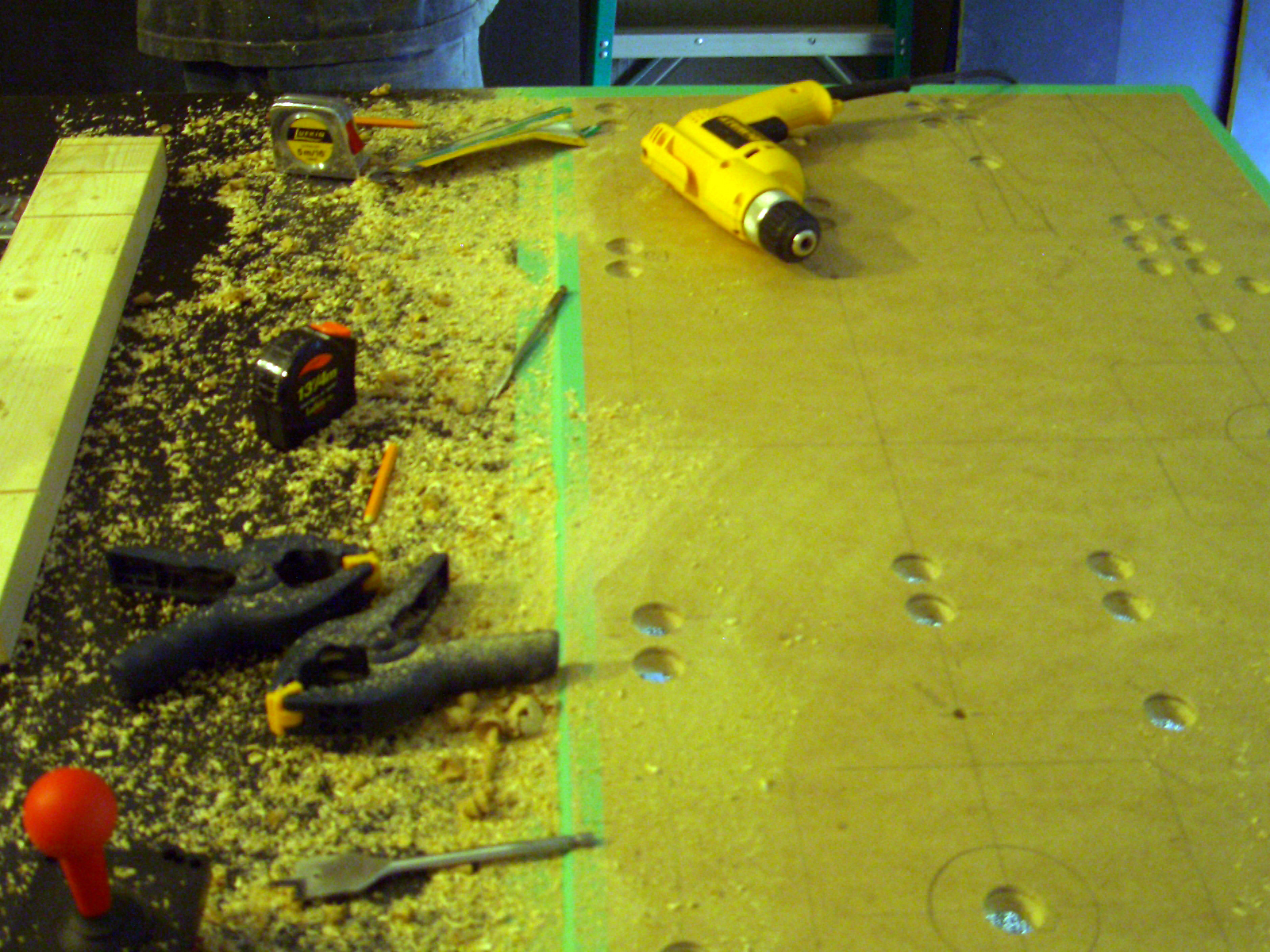 Drilling all the holes created an enormous amount of dust.
Drilling all the holes created an enormous amount of dust.

This is a side shot of the Player 3 trackball. J routed out the center, where the trackball needs to fit up and through to point to the flush plate.
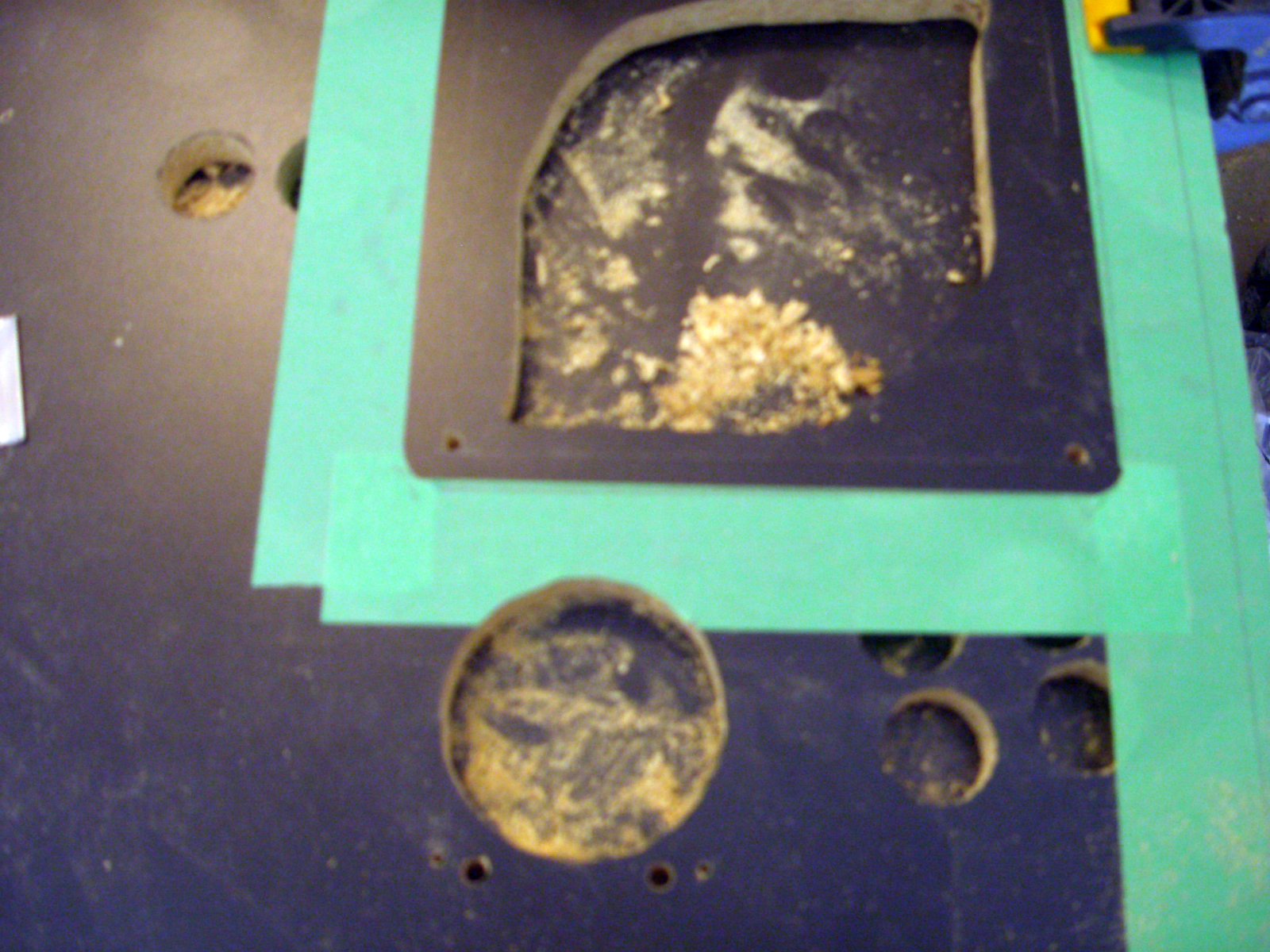 This is a correctly oriented shot of the player 2 trackball above the player 4 joystick.
This is a correctly oriented shot of the player 2 trackball above the player 4 joystick.
 This is a shot of the player 1 trackball, mounted to the left of the player 2 layout.
This is a shot of the player 1 trackball, mounted to the left of the player 2 layout.
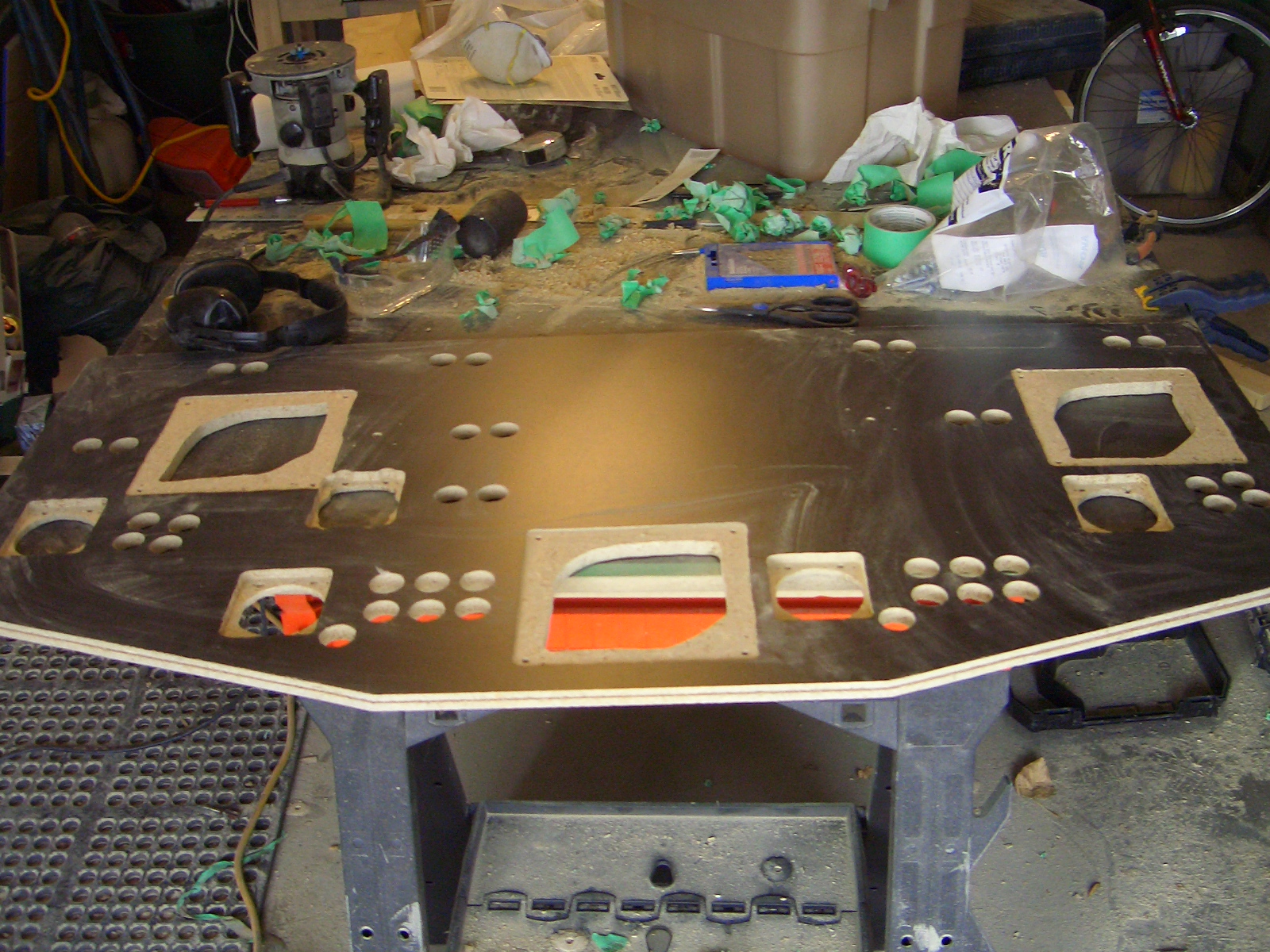 The end result. Everything is nicely lined up and symmetrical. Buttons are used for multiple controls wherever possible.
The end result. Everything is nicely lined up and symmetrical. Buttons are used for multiple controls wherever possible.
 A nice perspective shot of the control panel.
A nice perspective shot of the control panel.
 A close up shot of J's fine routing skills. Each of the holes was taped, then traced around the required control, then a razor blade was used to cut the tape and provide a guide for the routing area.
A close up shot of J's fine routing skills. Each of the holes was taped, then traced around the required control, then a razor blade was used to cut the tape and provide a guide for the routing area.





















